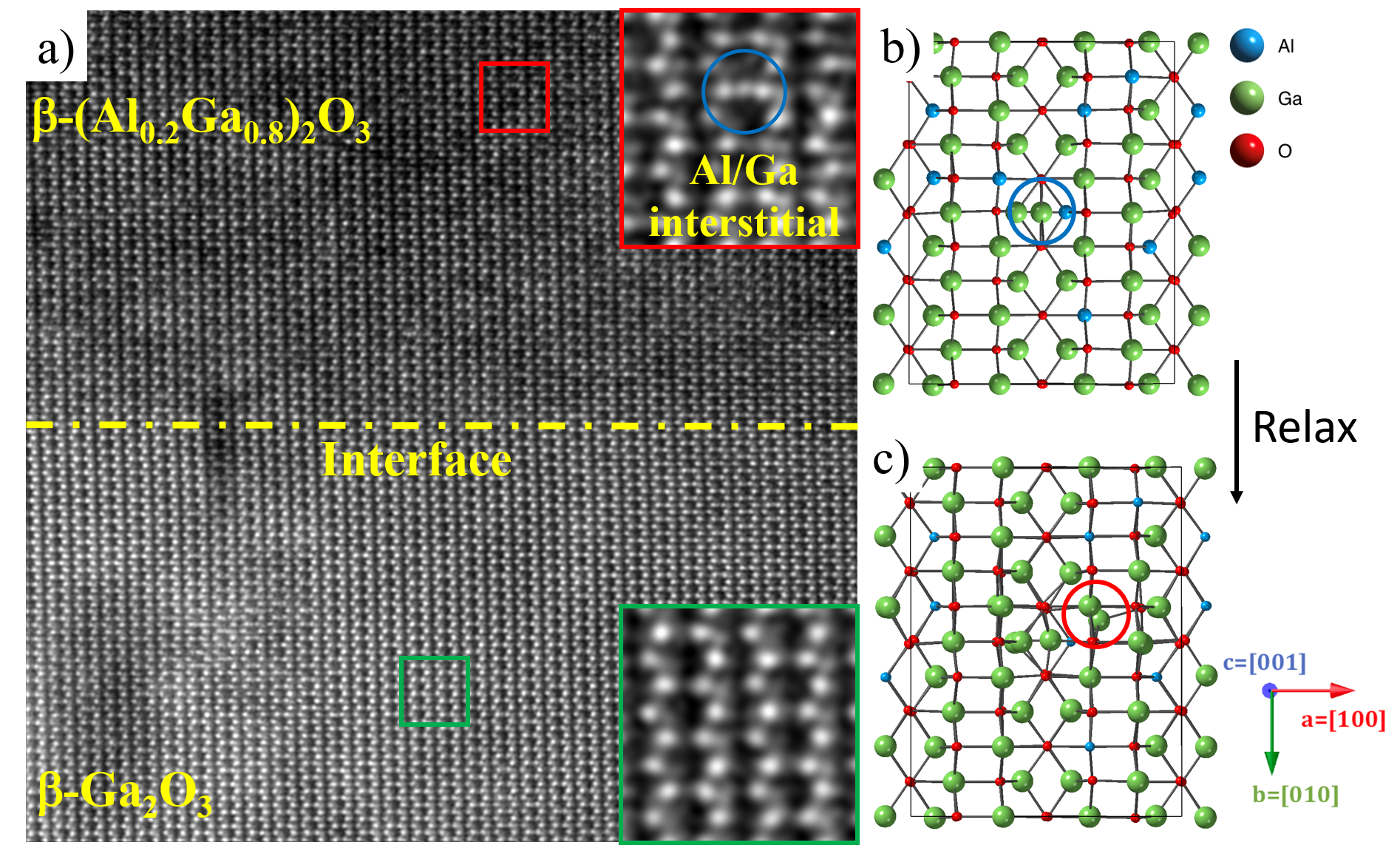Point Defects Influence on the Structural and Electronic Properties of ß-(AlxGa1-x)2O3
- Abstract number
- 1149
- Event
- Virtual Early Career European Microscopy Congress 2020
- Presentation Form
- Submitted Oral
- DOI
- 10.22443/rms.emc2020.1149
- Corresponding Email
- [email protected]
- Session
- PSA.3 - Semiconductors & Devices
- Authors
- Dr. Adrian Chmielewski (2), Sarah Deng (1), Parivash Moradifar (2), Leixin Miao (2), Kleyser Agueda Lopez (2), Dr. Yuewei Zhang (3), Akhil Mauze (3), Dr. James Speck (3), Dr. Wolfgang Windl (1), Dr. Nasim Alem (2)
- Affiliations
-
1. Ohio State University
2. Pennsylvania State University
3. University of California Santa Barbara
- Keywords
Gallium oxide, Point Defects, Thin film
- Abstract text
Beta-phase gallium oxide ß-Ga2O3 semiconductor is a very promising material for power electronics devices due to its large band gap (4.8 eV) and an expected high breakdown voltage (8 MV.cm-1). The addition of Al into ß-Ga2O3 leading to a ß-(AlxGa1-x)2O3 alloy enhances the electronic properties of this semiconductor enabling the design of many different semiconductor heterostructures such as modulation doped field effect transistors (MODFETs) [1]. However, the link between growth-induced defects and their potential impact on the structural and electronic properties of ß-(AlxGa1-x)2O3 alloys remains to be explored.
In this study we report direct observations of various point defects in ß-(Al0.2Ga0.8)2O3/ß-Ga2O3 interface and their role in the electronic properties using high resolution scanning/transmission (HR-S/TEM) imaging and electron energy loss spectroscopy (EELS). In addition, this study further investigates the distribution and coordination of Al, as well as Al and Ga interstitials in ß-(Al0.2Ga0.8)2O3/ß-Ga2O3 epitaxial film and their impact on the electronic structure of the film.
Figure 1 shows a HR-STEM image of the ß-(Al0.2Ga0.8)2O3/ß-Ga2O3 interface. Interestingly the Al/Ga interstitials (highlighted by blue circle in the top insert) are mainly present in the ß-(Al0.2Ga0.8)2O3 film whereas the ß-Ga2O3 is almost defect free. Moreover, we will show that the number of interstitials increases at the interface. In order to describe the effect of these defects on the electronic properties, we have performed EELS scan across the interface to probe the volume plasmon of Ga. Using the Drude model, we can deduce the free electron density across the ß-(Al0.2Ga0.8)2O3/ß-Ga2O3 interface. We will show that the electron density is increased by ~ 2e-.nm-3 at the interface and is induced by the higher density of Al/Ga interstitials at the interface.
To get insight at atomic scale of the Al/Ga interstitials within the ß-(Al0.2Ga0.8)2O3 film, density functional theory (DFT) calculations have been carried out within the Vienna Ab initio Simulation Package (VASP) [2]. Two initial ß-(Al0.2Ga0.8)2O3 structures were generated and studied. We considered both Ga and Al interstitial in our calculations. Figure 1.b shows the initial structure of ß-(Al0.2Ga0.8)2O3/ß-Ga2O3 in [001] projection with a Ga interstitial (blue circle) placed initially in the tetrahedral site. The Ga interstitial will induce distortion in the ß-(Al0.2Ga0.8)2O3 matrix that will push some of the nearest Ga neighbors creating new interstitials as highlighted by the red circle in the relaxed structure in Figure 1.c. These new interstitials act as deep-level donor whereas distortions caused by Al interstitials creates a shallow donor state. This report provides a better understanding, at the nanoscale, of the effect of point defects on the electronic structure of ß-(AlxGa1-x)2O3 alloy that is meaningful for the development of future gallium-oxide based applications.
Figure 1. (a) HR-STEM image of the ß-(Al0.2Ga0.8)2O3/ß-Ga2O3 interface in the [001] projection. Yellow circles are highlighting the Al and/or Ga interstitial as shown in the zoom-in image on the insert. The defects are mainly in the ß-(Al0.2Ga0.8)2O3 film whereas the substrate is almost defect free. (b) Initial structure of ß-(Al0.2Ga0.8)2O3/ß-Ga2O3 in [001] projection with a Ga interstitial (blue circle) placed initially in the tetrahedral site. (c) Relaxed structure of the Ga- interstitial in ß-(Al0.2Ga0.8)2O3 in [001] projection. Ga interstitials induce distortion of certain nearest neighbors creating new interstitials atoms that are pushed from their initial positions as highlighted by a red circle.
- References
[1] Y. Zhang et al., 112, 233503 (2018)
[2] G. Kresse and J. Furthmüller, 54, 10 (1996), p. 11169-11186

